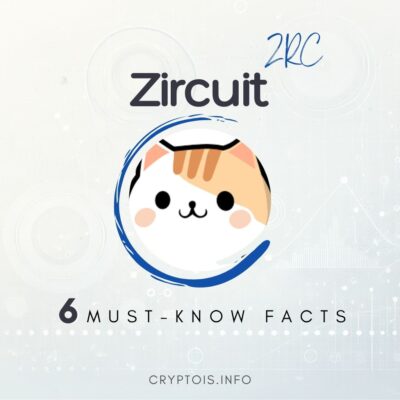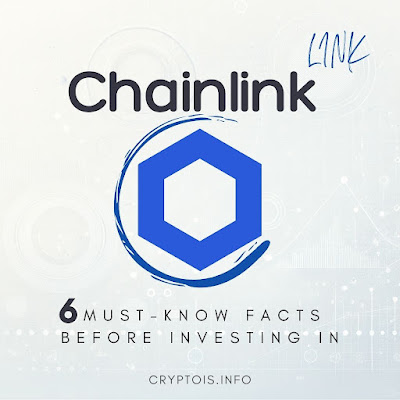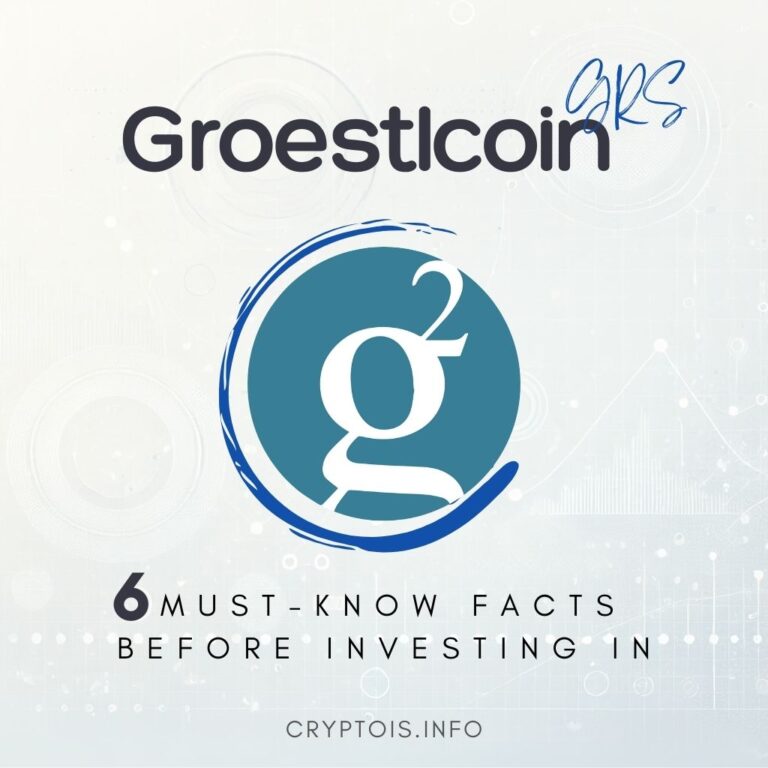Zircuit (ZRC): 6 Must-Know Facts

An In-depth Analysis of the AI-Secured Ethereum Layer 2
As Ethereum continues its reign as the dominant smart contract platform, the race for effective Layer 2 scaling solutions has become one of the most critical frontiers in blockchain development. Amidst a field of established giants, Zircuit has emerged with a compelling and timely proposition: a Layer 2 network that prioritizes security as much as scalability. By integrating AI at its core, Zircuit aims to create a safer environment for users and developers, tackling the rampant exploits that have plagued the broader ecosystem.
I. Project Overview
Zircuit is a cutting-edge Layer 2 network that enhances Ethereum’s capabilities by offering a high-performance, low-cost, and fully EVM-compatible environment. What truly sets Zircuit apart is its unique, security-first architecture. The project was conceived and built by a team of seasoned researchers and web3 security veterans, including co-founders Dr. Martin Derka and Jan Gorzny, who possess deep expertise in computer science, cryptography, and smart contract security.
The core innovation of Zircuit is its implementation of Sequencer Level Security (SLS). This AI-driven system proactively monitors the network’s mempool for malicious transactions before they are even included in a block. By identifying potential hacks, exploits, and scams in real-time, Zircuit can quarantine and prevent them, offering a layer of protection that goes far beyond the typical security models of other L2s. This approach aims to directly combat the billions of dollars lost to DeFi exploits and create a more trustworthy platform for mainstream adoption.
The project has garnered significant attention and backing from top-tier venture capital firms, including Pantera Capital, Dragonfly Capital, Binance Labs, and Maelstrom, underscoring the industry’s confidence in its novel approach to blockchain security.
II. Token Metrics
The ZRC token officially launched in June 2025, and its market data reflects the initial phase of price discovery and trading activity. The metrics below provide a snapshot of its performance shortly after its introduction to the market.
| Metric | Value | Notes | Source |
| Current Price | ~$0.025 USD | As of June 29, 2025 | CoinMarketCap |
| Market Capitalization | ~$55M USD | Based on initial circulating supply | CoinMarketCap |
| Fully Diluted MCap | ~$250M USD | Based on max supply | CoinMarketCap |
| 24-Hour Volume | ~$57M USD | Reflects strong initial trading interest | CoinMarketCap |
| Circulating Supply | 2,194,923,458 ZRC | Approx. 21.9% of Max Supply | CoinMarketCap |
| Max Supply | 10,000,000,000 ZRC | Fixed total supply | CryptoRank.io |
| All-Time High | ~$0.1379 USD | Varies by exchange, reflects launch volatility | Binance |
Sheets로 내보내기
III. Token Economics
The ZRC token is the native utility and governance asset of the Zircuit ecosystem. Its primary functions are to facilitate network governance, reward ecosystem participants, and serve as a medium of exchange for services within the network. The tokenomics are structured to incentivize long-term participation from builders, users, and investors.
Token Distribution
The total supply of 10 billion ZRC tokens is allocated to foster a balanced and sustainable ecosystem. The distribution reflects a strong emphasis on community growth and long-term development.
| Category | Allocation (%) | Purpose | Source |
| Team | 18.7% | To reward and retain the core development team. | CryptoRank.io |
| Foundation | 18.7% | To support the long-term health and growth of the Zircuit protocol. | CryptoRank.io |
| Ecosystem Development | 17.9% | Funding for grants, partnerships, and ecosystem initiatives. | CryptoRank.io |
| Future Airdrops | 14.0% | Reserved for future community reward programs. | CryptoRank.io |
| Community Provisions | 13.1% | General funds for community-facing activities and rewards. | CryptoRank.io |
| Investors | 10.6% | Allocation for early-round and strategic investors. | CryptoRank.io |
| Season 1 Airdrop | 7.0% | Initial airdrop for early users and community members. | CryptoRank.io |
Sheets로 내보내기
Vesting Schedule
To ensure long-term alignment and prevent market instability, significant portions of the ZRC supply are subject to structured vesting periods. While the initial airdrop was fully unlocked at the Token Generation Event (TGE), allocations for the team, foundation, and investors are locked for an extended period.
| Stakeholder Group | Vesting Details | Source |
| Team | 1-year cliff, followed by a 2-year linear unlock period. | CryptoRank.io |
| Foundation | 1-year cliff, followed by a 2-year linear unlock period. | CryptoRank.io |
| Ecosystem Development | 1-year cliff, followed by a 2-year linear unlock period. | CryptoRank.io |
| Investors | 1-year cliff, followed by a 2-year linear unlock period. | CryptoRank.io |
| Season 1 Airdrop | 100% unlocked at TGE in June 2025. | CryptoRank.io |
Sheets로 내보내기
IV. Technical Features and Development Status
Zircuit’s technical architecture is a hybrid approach that leverages the best aspects of existing scaling technologies while introducing its own security innovations. It operates as a fully EVM-compatible Zero-Knowledge (ZK) rollup, meaning developers can easily migrate their existing Ethereum applications and tooling without significant changes.
The standout feature is Sequencer Level Security (SLS). Unlike other L2s where malicious transactions can be included in blocks and only disputed later (in the case of optimistic rollups) or are simply assumed valid if the math checks out (in ZK-rollups), Zircuit acts as a preemptive defense layer. Its AI-powered sequencer scans transactions for signatures of common exploits. If a threat is detected, the transaction is quarantined and prevented from executing, effectively stopping hacks before they happen.
The project has been in development for over two years. Key milestones include:
- November 2023: Launch of the public testnet.
- March 2024: Launch of the “Build to Earn” program, which attracted over 1,100 applications from projects wanting to build on Zircuit.
- July 2024: The Zircuit Mainnet Phase 1 went live, marking a major step towards a fully operational network.
- Q1 2025: Publication of technical roadmaps detailing plans for performant provers and enhanced security scaling.
The platform is live and actively onboarding projects and users, with a focus on continuing to refine its AI security models and decentralize its sequencer over time.
V. Market Analysis
Zircuit enters the highly competitive Layer 2 market, where it competes for developer talent, user liquidity, and dApp deployments against well-entrenched incumbents. Its unique selling proposition is its enhanced security, a powerful narrative in a market that has lost billions to hacks.
Competitors
- StarkNet (STRK): A leading ZK-rollup developed by StarkWare that uses STARK proofs, which are known for their scalability and quantum-resistant properties. StarkNet has a strong focus on performance for complex applications. Its market capitalization stands at approximately $387 million (Bybit, Jun 2025).
- zkSync (ZK): Developed by Matter Labs, zkSync is another major EVM-compatible ZK-rollup that was among the first to launch. It has a significant ecosystem of dApps and a strong community following. Its market capitalization is approximately $326 million (Bybit, Jun 2025).
- Arbitrum & Optimism: These are the leading optimistic rollups, which command the largest share of the L2 market value locked. While their security model differs (relying on a 7-day fraud-proof window), their established network effects and large ecosystems make them formidable competitors.
Zircuit’s strategy is not to compete purely on transaction speed or cost, but to offer a fundamentally safer on-chain environment. This focus on AI-driven, preventative security at the protocol level is its key differentiator. While zkSync and StarkNet focus on the mathematical correctness of state transitions, Zircuit adds a practical layer of defense against real-world smart contract exploits, which could be a decisive factor for security-conscious projects and institutional users.
VI. Community and Partnerships
Zircuit has executed a highly effective strategy to build momentum through strategic partnerships and community engagement programs. Its mainnet launch was supported by an impressive list of over 1,100 ecosystem partners attracted through its “Build to Earn” initiative.
Community Engagement
The primary focus of the Zircuit community in mid-2025 revolves around its staking and points programs. The “Zircuit Staking” program, which allowed users to deposit assets like ETH, LSTs, and LRTs to earn Zircuit Points ahead of the mainnet launch, was immensely successful, attracting over $3.5 billion in staked value. This indicates massive user interest and a strong desire to participate in the ecosystem. Current community discussions on platforms like X (formerly Twitter) are dominated by topics related to the ZRC airdrop, staking rewards, and trading on newly listed exchanges. While deep technical debates are less visible in public forums, the high level of participation in its incentive programs demonstrates a large and active user base ready to engage with the live network.
Strategic Partnerships
Zircuit’s credibility is significantly bolstered by its partners.
- Venture Capital: The project is backed by a powerhouse of investors including Pantera Capital, Dragonfly Capital, and Binance Labs. This provides not only substantial funding but also invaluable strategic guidance and industry connections.
- DeFi & Restaking Protocols: Zircuit has established deep integrations with leading projects in the DeFi and Liquid Restaking (LRT) space. Key launch partners include Ethena, Renzo, Ether.fi, KelpDAO, and Pendle. These partnerships ensure that significant liquidity and high-demand applications were available on Zircuit from day one, creating a vibrant and functional ecosystem for new users.
VII. Summary
Zircuit has successfully carved out a unique and highly relevant niche in the competitive Layer 2 landscape. By focusing on preventative, AI-driven security at the sequencer level, it addresses one of the most significant pain points for both users and developers in the Web3 space. The project is led by a credible team and backed by some of the most respected names in venture capital.
Its go-to-market strategy, centered around massive community incentive programs like staking and “Build to Earn,” has proven incredibly effective at bootstrapping a large user base and a rich ecosystem of dApps from its mainnet launch. While it faces stiff competition from established L2s, its security-first approach provides a powerful differentiator that could attract a significant share of on-chain activity, particularly from institutional players and projects where security is paramount. The future of the Zircuit network will depend on its ability to maintain its security edge while continuing to scale and decentralize its operations.
What is Zircuit?
Zircuit is a Layer 2 scaling solution for Ethereum that is fully EVM-compatible. It uses a hybrid ZK-rollup architecture and integrates AI at the sequencer level to proactively detect and prevent malicious transactions.
What makes Zircuit different from other L2s like Arbitrum or zkSync?
The primary difference is its focus on security. Zircuit’s Sequencer Level Security (SLS) is designed to stop hacks before they happen, whereas other rollups primarily focus on scaling and transaction validation without this preemptive security layer.
What is the main utility of the ZRC token?
The ZRC token is used for governance of the Zircuit protocol, rewarding ecosystem participants, and as a primary asset for paying fees or transacting within its dApp ecosystem.
Is Zircuit a good project for developers?
Because Zircuit is fully EVM-compatible, developers can use the same tools and programming languages (like Solidity) that they use on Ethereum. This, combined with programs like “Build to Earn” and the promise of enhanced security, makes it an attractive platform for building decentralized applications.
Disclaimer: This content is for informational purposes only and does not constitute financial advice. Cryptocurrency investments carry high risks, including the potential for loss of principal. All information is synthesized from sources believed to be reliable and accurate as of June 29, 2025, based on active web searches (including Google Search and analysis of provided URLs, if any) and prioritized source verification, including cross-referencing where applicable. Analysis and opinions expressed represent an original interpretation of available data and reflect an internal quality assessment aiming for high accuracy, depth, insight, and originality based on current data. Readers should perform their own thorough due diligence and consult with a qualified financial advisor before making any investment decisions.





